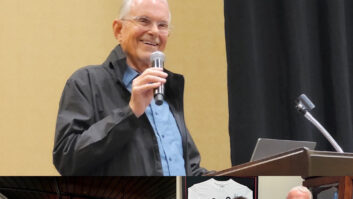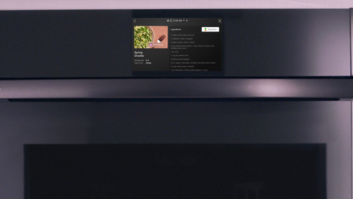Digital television sales continue to climb, according to three recently issued estimates of both sales-to-dealer and sales-to-consumer volume, but the ultimate success of the system will be gauged by broadcasters’ willingness to delivery compelling digital programming.
CEA made this its mission statement during last week’s National Association of Broadcasters convention, where it issued revised sales estimates along with a declaration designed to pressure broadcasters into ramping up their digital TV schedules.
The new CEA data on DTV receiver sales to dealers for 1999 stated that 17% (24,631 units) of 143,218 total DTV products (monitors, integrated sets and digital set-top receiver/decoders) sold in 1999 were capable of receiving digital broadcasts. CEA now expects total sales of DTV products to reach 600,000 by the end of the year.
Meanwhile, a new report issued by Neretin Associates, South Orange, N.J., projected sales to consumers of DTVs will reach 460,000 units, most of which will be HDTV capable. Only 5.4% of the projected DTV-ready sales for the year will include a receiver/decoder.
In its poll of 108 retailers, accounting for 95% of DTV sales, just 32 of the respondents said they carry integrated HDTV sets on their floors.
The Neretin report said most retailers plan to downplay set-top receiver/ decoders and fully integrated DTV sets until more HDTV broadcasts are available and prices of fully integrated models become more affordable.
The same conclusion was drawn by CEA’s report.
“We can expect receivers to remain a small percentage of overall DTV sales until consumers have access to regular, high-quality DTV programming,” said CEA market research VP Todd Thibodeaux.
CEA also released revised DTV sales projections based on three programming rollout scenarios.
· Product penetration could reach 50% of homes by 2006 if “broadcasters choose the fast lane to DTV and demonstrate 100% compliance with the Federal Communications Commission’s rollout schedule while providing a high percentage of digitally-originated content.”
· Penetration drops to 30% “if broadcasters take a middle-of-the-road approach and experience continued station conversion delays while providing consumers with a high percentage of upconverted analog content.”
· The numbers fall to just 15% “if broadcasters choose the off ramp on the road to DTV, characterized by non-HDTV business models and delays related to reopening the DTV standard.”
According to CEA president Gary Shapiro, “Broadcasters’ willingness to step up and deliver on DTV could have a significant impact on the pace of the DTV transition – and the future of free, over-the-air TV. We urge the broadcast community to accelerate their programming efforts and deliver on DTV.”













